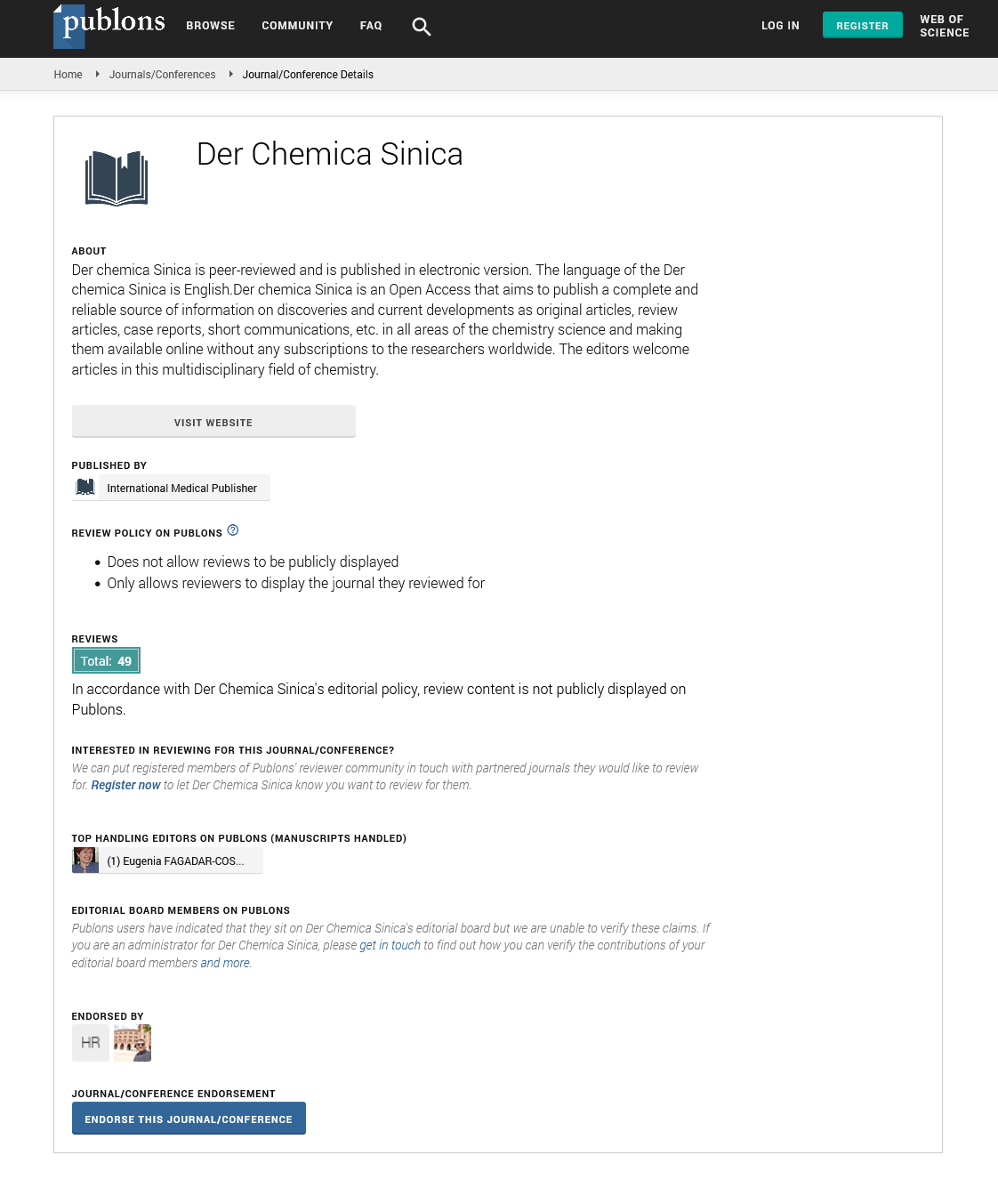ISSN : 0976-8505
Der Chemica Sinica
Abstract
Enrichment and removal of uranyl ions by using polymeric supports: A review
At one hand uranium is an element of considerable technological importance. In nuclear power plants uranium is used as fuel. Other than this, uranium has no significant commercial use. On the other hand uranium is highly toxic and radioactive heavy metal that mainly originates from nuclear-related activities and causes significant environmental and public health problems by its presence in terrestrial and aquatic ecosystems. There is 4.5 billion tons of uranium in seawater, which can solve global energy crisis by acting as long lasting fuel for atomic power plants. Concentration of uranium in seawater is approximately 2.8–3.3 mg /m3 in the ionic form of uranyl tricarbonate ions (UO2(CO3)3 4-). In the recent past much attention has been paid in the direction of recovering uranium from nonconventional sources such as coal and natural waters (0.1–10 mg /m3), especially from seawater. The recovery of uranium from contaminated water of flooded mines (0.1–15 mg U/ m3) also presents a very important environmental problem to be solved. In the recent past use of hydrogels or hydrophilic crosslinked polymers or copolymers as adsorbents for the removal of uranium from sea water, coal, various effluents, and natural waters for both environment management as well as to be used as fuel in nuclear plants has tremendously increased. The aim of this article is to review the use of polymeric supports those have been reported in uranium enrichment and removal. The technical feasibility of various low-cost polymeric adsorbents for uranyl ions enrichment and removal from various sources has been reviewed.
Author(s): Sandeep Chauhan
Abstract | PDF
Share This Article
Google Scholar citation report
Citations : 6019
Der Chemica Sinica received 6019 citations as per Google Scholar report
Der Chemica Sinica peer review process verified at publons
Abstracted/Indexed in
- Google Scholar
- Open J Gate
- Genamics JournalSeek
- China National Knowledge Infrastructure (CNKI)
- Directory of Research Journal Indexing (DRJI)
- Publons
- MIAR
- International Committee of Medical Journal Editors (ICMJE)
- Serials Union Catalogue (SUNCAT)
- Geneva Foundation for Medical Education and Research
- Secret Search Engine Labs
- Euro Pub
- CAS (Chemical Abstracting Services)
- University of Barcelona
Open Access Journals
- Aquaculture & Veterinary Science
- Chemistry & Chemical Sciences
- Clinical Sciences
- Engineering
- General Science
- Genetics & Molecular Biology
- Health Care & Nursing
- Immunology & Microbiology
- Materials Science
- Mathematics & Physics
- Medical Sciences
- Neurology & Psychiatry
- Oncology & Cancer Science
- Pharmaceutical Sciences
